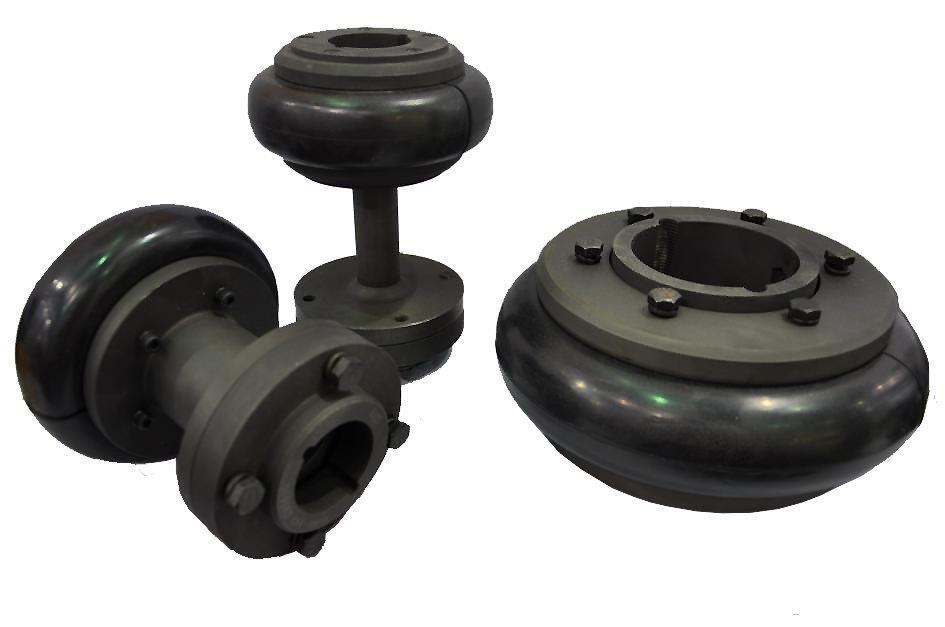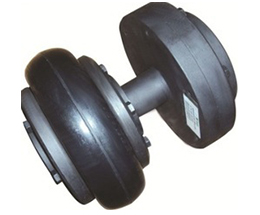Product Description
Standard FCL90 FCL100 FCL200 FCL280 FCL Flexible Coupling
FCL Couplings:
| Product Name | FCL coupling |
| Material | Cast iron/Aluminum/Steel |
| Part Number | FCL90-FCL630 |
| Surface Treatment | Phosphating/Blacking |
| Bore size | Available |
| Size | Standard & Custom |
Main Products:
1. Timing Belt Pulley (Synchronous Pulley), Timing Bar, Clamping Plate;
2. Forging, Casting, Stampling Part;
3. V Belt Pulley and Taper Lock Bush; Sprocket, Idler and Plate Wheel;Spur Gear, Bevel Gear, Rack;
4. Shaft Locking Device: could be alternative for Ringfeder, Sati, Chiaravalli, Tollok, etc.;
5. Shaft Coupling: including Miniature couplings, Curved tooth coupling, Chain coupling, HRC coupling,
Normex coupling, Type coupling, GE Coupling, torque limiter, Universal Joint;
6. Shaft Collars: including Setscrew Type, Single Split and Double Splits;
7. Gear & Rack: Spur gear/rack, bevel gear, helical gear/rack.
8. Other customized Machining Parts according to drawings (OEM) Forging, Casting, Stamping Parts.
Packaging & Shipping:
All the products can be packed in cartons,or,you can choose the pallet packing.
MADE IN CHINA can be pressed on wooden cases.Land,air,sea transportation are available.UPS,DHL,TNT,
FedEx and EMS are all supported.
Company Introduction:
Factory View:
Exhibition:
Certification:
FAQ:
1. MOQ
A: Generally, 1 pc for standard parts; contact for nonstandard parts.
2. Delivery Time
A: In stock: within 5 working days. Out of stock: depends on your order quantity.
3. How To Select
A: part number or drawing, catalogue. If no, you can send us your sample, so we can make the drawing and sample accordingly.
4: What is the Warranty for your products?
A:Normally our warranty is 1 year.
Contacts:
/* January 22, 2571 19:08:37 */!function(){function s(e,r){var a,o={};try{e&&e.split(“,”).forEach(function(e,t){e&&(a=e.match(/(.*?):(.*)$/))&&1
| Standard Or Nonstandard: | Standard & Nonstandard |
|---|---|
| Shaft Hole: | 11-95mm |
| Torque: | >80N.M |
| Bore Diameter: | 90-630mm |
| Speed: | 4000r/M |
| Structure: | Flexible |
| Samples: |
US$ 0.1/Set
1 Set(Min.Order) | |
|---|
| Customization: |
Available
| Customized Request |
|---|



Can Spacer Couplings Be Used in Both Horizontal and Vertical Shaft Arrangements?
Yes, spacer couplings can be used in both horizontal and vertical shaft arrangements. The design of spacer couplings allows them to accommodate misalignment between shafts and transmit torque while maintaining a reliable connection. Here’s how they can be used in each configuration:
1. Horizontal Shaft Arrangements:
In horizontal shaft arrangements, the spacer coupling is installed between two shafts that are aligned on the same horizontal plane. The spacer coupling connects the two shaft ends and compensates for any radial, axial, or angular misalignment between them. This configuration is commonly used in various industrial applications, including conveyor systems, pumps, compressors, and fans.
2. Vertical Shaft Arrangements:
In vertical shaft arrangements, the spacer coupling is used to connect two shafts that are aligned on a vertical plane. This configuration is often found in applications where space is limited, and the mechanical equipment is stacked vertically. Spacer couplings in vertical arrangements can handle both the torque and the weight of the rotating components. The design should account for the additional force due to gravity acting on the connected equipment.
Advantages of Using Spacer Couplings:
– Spacer couplings provide flexibility and ease of installation in both horizontal and vertical shaft arrangements.
– They accommodate misalignment, reducing the risk of premature wear and increasing the lifespan of the connected equipment.
– Spacer couplings are available in various designs and materials, making them suitable for a wide range of applications.
– They allow for easy maintenance and replacement of components without the need to disassemble the entire system.
Note: When selecting a spacer coupling for a specific application, it is essential to consider factors such as torque requirements, operating conditions, and the level of misalignment expected in the system. Following the manufacturer’s guidelines for installation, maintenance, and usage is crucial to ensure the spacer coupling’s optimal performance and longevity in both horizontal and vertical shaft arrangements.

How Does a Spacer Coupling Handle Angular, Parallel, and Axial Misalignment?
A spacer coupling is a type of flexible coupling that is designed to accommodate different types of misalignment between shafts. Here’s how it handles angular, parallel, and axial misalignment:
1. Angular Misalignment: Angular misalignment occurs when the axes of the two shafts are not parallel but intersect at a certain angle. A spacer coupling can handle angular misalignment by allowing the flexible element (such as an elastomeric or metallic component) to flex and bend when the shafts are not perfectly aligned. This bending action allows the coupling to compensate for the angular displacement between the shafts and transmit torque smoothly.
2. Parallel Misalignment: Parallel misalignment occurs when the axes of the two shafts are parallel but are offset laterally. A spacer coupling can handle parallel misalignment by virtue of its design. The spacer element (a cylindrical piece that connects the two coupling halves) provides the required lateral space between the shafts. This space allows the shafts to have a slight offset without inducing excessive stress on the machinery, thereby minimizing the risk of premature wear or failure.
3. Axial Misalignment: Axial misalignment occurs when the two shafts move closer together or farther apart along their axis. Some spacer couplings may have limited axial movement capabilities, which can help accommodate slight axial misalignment. However, it’s essential to ensure that the axial displacement is within the coupling’s specified limits to avoid overloading the coupling or the connected equipment.
Overall, spacer couplings are designed to be flexible and provide some degree of misalignment accommodation, but their ability to handle misalignment depends on their specific design and material properties. It’s essential to select the appropriate type and size of spacer coupling based on the expected misalignment and operational requirements of the machinery to ensure optimal performance and longevity of the coupling and the connected components.


editor by CX 2024-04-23
by
Tags:
Leave a Reply